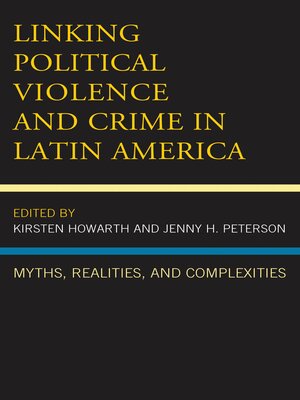Linking Political Violence and Crime in Latin America
ebook ∣ Myths, Realities, and Complexities · Security in the Americas in the Twenty-First Century
By Ami C. Carpenter

Sign up to save your library
With an OverDrive account, you can save your favorite libraries for at-a-glance information about availability. Find out more about OverDrive accounts.
Find this title in Libby, the library reading app by OverDrive.



Search for a digital library with this title
Title found at these libraries:
| Library Name | Distance |
|---|---|
| Loading... |
This edited collection explores the politics of crime and violence in Latin America through both theoretical reflections as well as several detailed case studies based on empirical, primary research. Its overall aim is to explore common misperceptions and simplifications which are often found in political discourses, policy documentation, as well as some academic work. These simplifications include a focus on gangs, narrow understandings of organized criminal groups and the knock-on effect that such a focus has on policy making. Instead, the chapters in this book shift the reader's gaze to more structural explanations and analytical approaches, moving them towards an understanding of how wider historical, economic, cultural and even psychological issues impact the complex relationships between crime, violence, and politics in the region. The detailed case studies also allow for a unique comparative analysis of problems faced throughout the region. While significant differences exist, analysis of the case studies reveals common issues, problems, and debates between countries (including structural violence, militarization, and neo-liberalism). These "golden threads" reveal not only the complexity of crime and violence in the region but also expose the failure of the overly simple "gangsterism" discourse found elsewhere. Finally, and importantly, several of the chapters explore the politics of policy making in relation to these problems, shedding light on the complex reasons for policy failures and highlighting innovative opportunities for change. Whilst shedding light on current problems in the region the book also offers a range of analytical approaches for exploring other cases where crime, violence, and politics collide.







